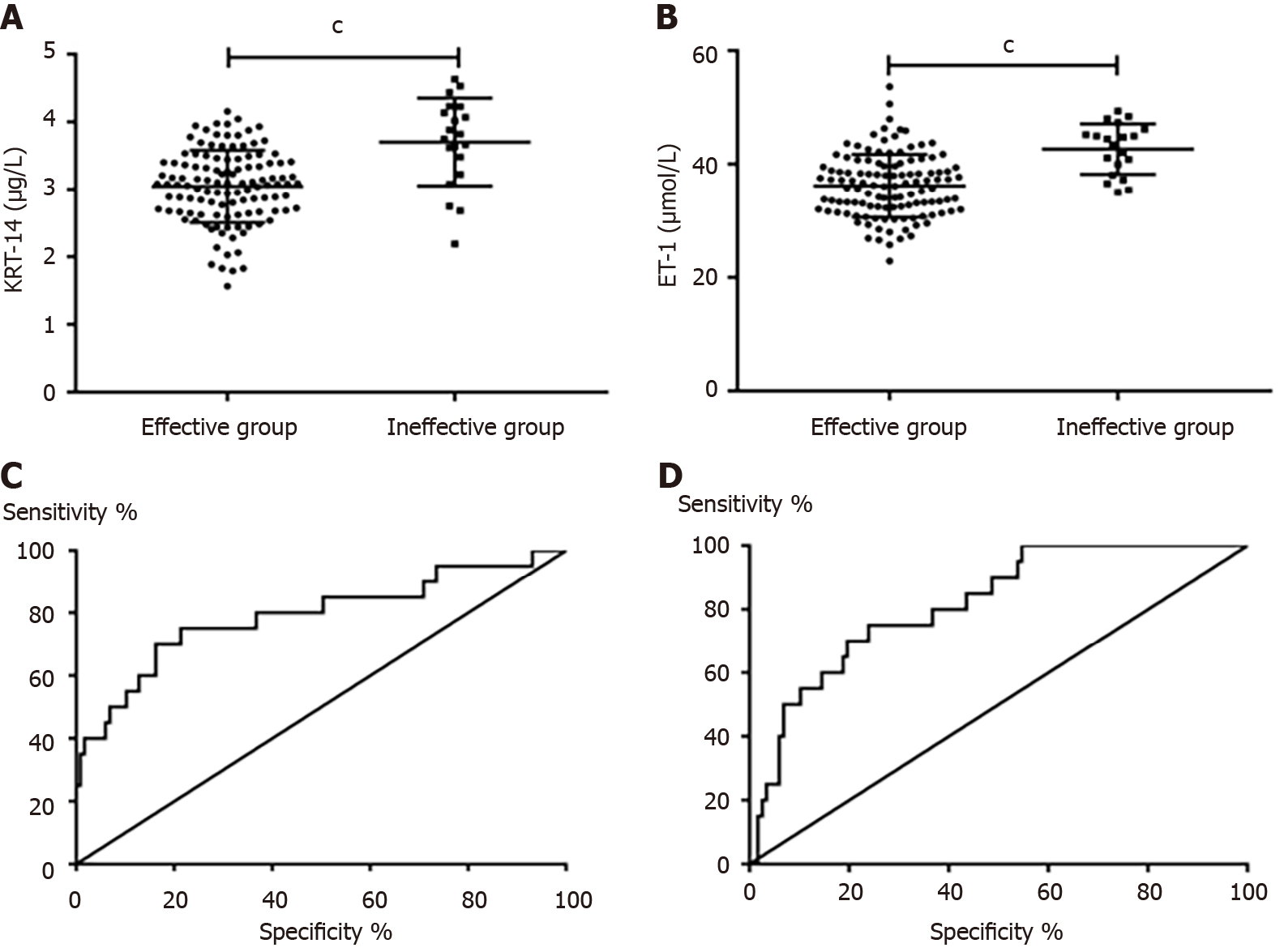Copyright
©The Author(s) 2024.
World J Clin Cases. Aug 16, 2024; 12(23): 5366-5373
Published online Aug 16, 2024. doi: 10.12998/wjcc.v12.i23.5366
Published online Aug 16, 2024. doi: 10.12998/wjcc.v12.i23.5366
Figure 1 Changes in blood gas indexes before and after treatment.
A: There was no significant difference in the PaO2 in the observation group (42.39 ± 6.14) and in the control group (41.01 ± 5.89) (t = 1.338, P = 0.183). The PaO2 in both groups was significantly increased after treatment (P < 0.05), and it was significantly higher than the control group (68.54 ± 5.96) than in the observation group (76.92 ± 5.94), (t = 8.226, P < 0.001); B: There was no significant difference in the PaCO2 in the observation group (51.38 ± 4.57) and the control group (52.64 ± 3.89) (t = 1.725, P = 0.087). The PaCO2 in both groups was significantly decreased after treatment (P < 0.05), and in the observation group (35.58 ± 3.10) it was significantly lower than the control group (43.08 ± 3.83) (t = 12.659, P < 0.001); C: There was no significant difference in the PaO2/FiO2 of the observation group (189.19 ± 10.95) and in the control group (192.05 ± 11.55) (t = 1.487, P = 0.139). The PaO2/FiO2 was significantly increased in both groups after treatment (P < 0.05), and in the observation group (426.97 ± 41.39), it was significantly higher than the control group (387.18 ± 28.86) (t = 6.115, P < 0.001). cP < 0.001.
Figure 2 Levels of keratin-14 and endothelin-1 before and after treatment.
A: There was no significant difference in keratin-14 (KRT-14) in the observation group (4.38 ± 0.84) and in the control group (4.41 ± 0.70) (t = 0.822, P = 0.225). KRT-14 was significantly decreased in both groups after treatment (P < 0.05), and in the observation group (2.99 ± 0.64), the decrease was significantly lower than the control group (3.31 ± 0.51) (t = 3.206, P < 0.002); B: There was no significant difference in endothelin-1 (ET-1) between the observation group (51.34 ± 5.13) and the control group (49.90 ± 4.75) (t = 1.697, P = 0.092). ET-1 was significantly decreased in both groups after treatment (P < 0.05), and it was significantly lower in the observation group (33.29 ± 3.93), than in the control group (41.51 ± 4.48) (t = 11.441, P < 0.001). bP < 0.01, cP < 0.001.
Figure 3 Diagnostic value of the curative effectiveness of keratin-14 and endothelin-1.
A: Keratin-14 was significantly lower in neonates with effective therapy (2.94 ± 0.56) than in neonates with ineffective therapy (3.70 ± 0.65) (t = 5.472, P < 0.001); B: Endothelin-1 (ET-1) was significantly lower in neonates with effective therapy (33.80 ± 5.36) than that in neonates with ineffective therapy (42.68 ± 4.48) (t = 6.997, P < 0.001); C: Receiver operating characteristic (ROC) curves of keratin-14 in the diagnosis of effective therapy; D: ROC of ET-1 in diagnosis of therapeutic effect after treatment.
- Citation: Shi ZN, Zhang X, Du CY, Zhao B, Liu SG. Effects of pulmonary surfactant combined with noninvasive positive pressure ventilation in neonates with respiratory distress syndrome. World J Clin Cases 2024; 12(23): 5366-5373
- URL: https://www.wjgnet.com/2307-8960/full/v12/i23/5366.htm
- DOI: https://dx.doi.org/10.12998/wjcc.v12.i23.5366











